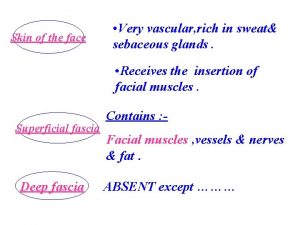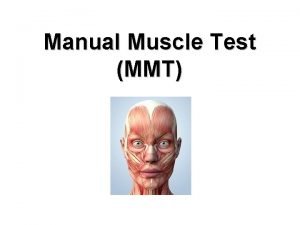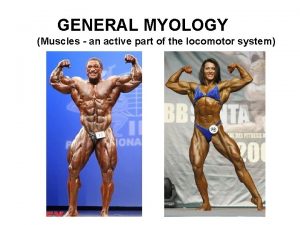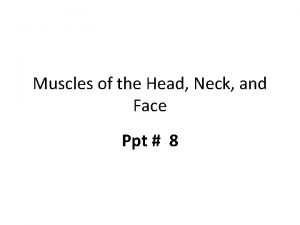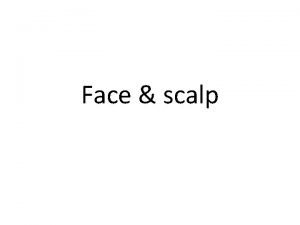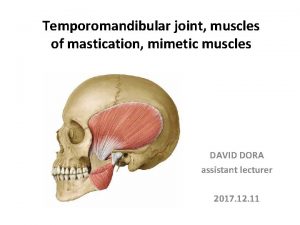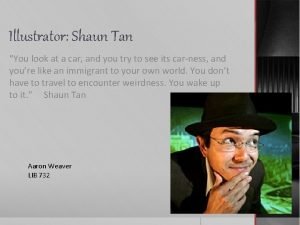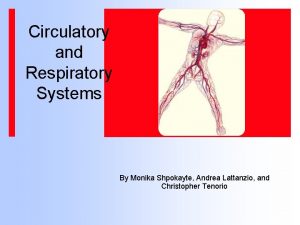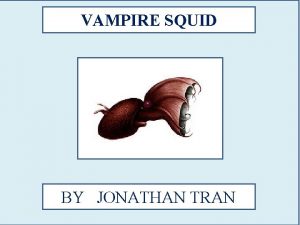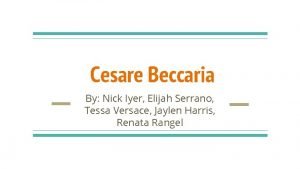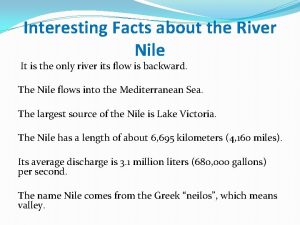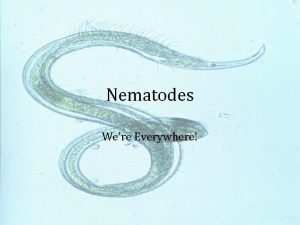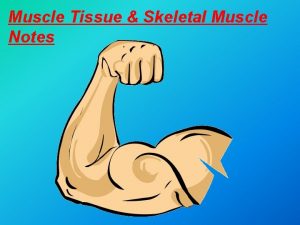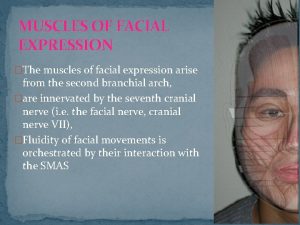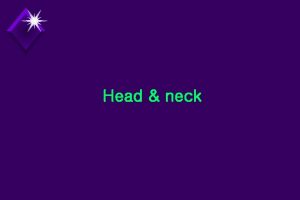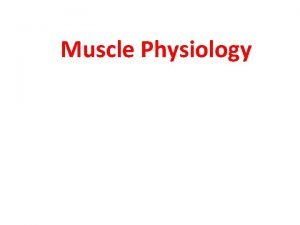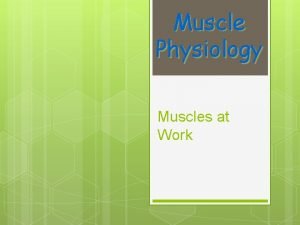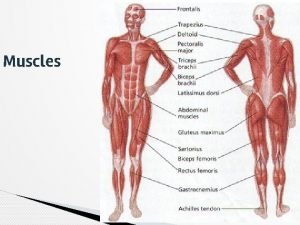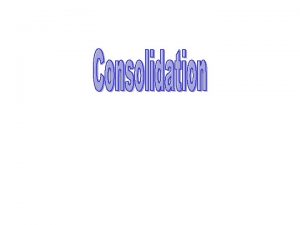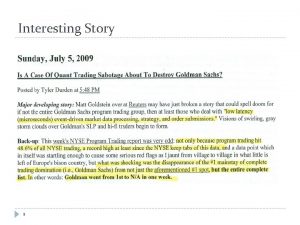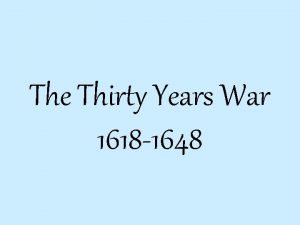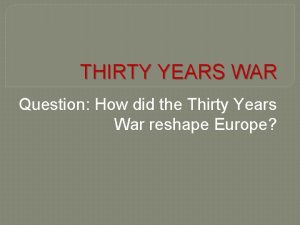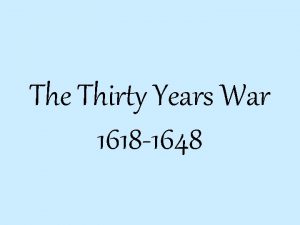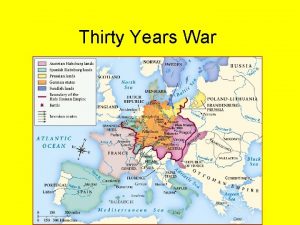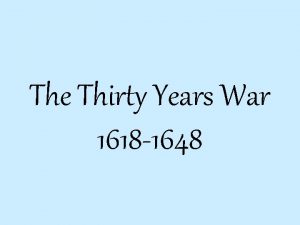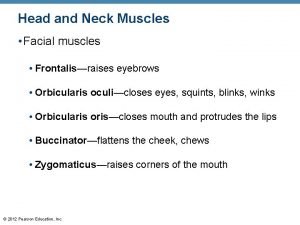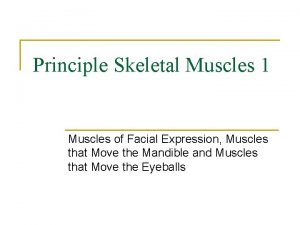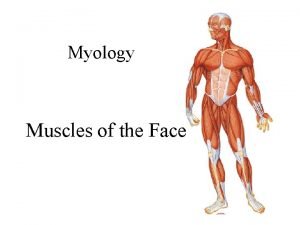Muscles Interesting Muscle Facts 1 Thirty facial muscles





















- Slides: 21

Muscles

Interesting Muscle Facts 1. Thirty facial muscles create looks like surprise, happiness, sadness, and frowning 2. Eye muscles are the busiest muscles in the body. Scientists estimate they may move more than 100, 000 times a day 3. Largest muscle in the body is the gluteus maximus muscle in the buttocks. 4. It takes 10 muscles to smile, 12 muscles to frown. . . and 1 to make a difference! 5. Smallest muscle in our body is in the inner ear and is called stapes

What makes our bodies move? MUSCLES!!! • Marionettes are puppets on strings. By pulling different strings, you make these puppets dance, bow or wave their arms. Your skeleton is similar to the puppet’s body. It does not move unless something pulls on its bones. The strings that pull on your bones are your MUSCLES.

What is Muscle? Muscle is a tissue composed of bundles of elongated cells capable of contraction and relaxation to produce movement in an organ or body part.


Parts of the muscle Tendon: • white cord made up of extremely strong tissues • Connects muscle to the bone Body: • thick part of the muscle Aponeurosis: • membrane of connective tissue separating the muscle from the adjacent muscles

Tendon vs. Ligament

Functions of Muscles Movement of limbs and organs Posture maintenance A. B. • Even while you are still your muscles are continuously at work in order to maintain your posture Joint stabilization C. • Without muscles, some of our joints would not stay in place Heat Release D. • • • Muscle contraction requires chemical energy 75% of this chemical energy is transformed into thermal energy (ie. heat). The thermal energy that is released helps maintain body temperature at 37 C

Voluntary vs. Involuntary Muscle �Muscle can be voluntary or involuntary a) Voluntary - consciously controlled by the brain Ex: raising your arm to scratch your head b) Involuntary - not consciously controlled by the brain. Ex: the contraction of the diaphragm during inhalation

There are 3 Types of Muscle All the functions of muscle are carried out by 3 different muscle tissues: 1. Skeletal (Striated) 2. Smooth 3. Cardiac

Skeletal Muscle (voluntary striated)

Skeletal Muscle �Voluntary �Striated appearance �Attached to the bones of the skeleton �Can generate a lot of force but tire easily: low endurance

Smooth Muscle (Involuntary - no striations)

Smooth Muscle �Involuntary �No striations �Make up the walls of the internal organs such as the bladder, stomach, and uterus. �Do not generate as much force as skeletal muscle but do not tire easily: medium endurance

Cardiac Muscle (involuntary - striated)

Cardiac Muscle �Involuntary �No striations �Found only in the heart �Has great strength and endurance



Antagonistic Muscles �All muscles work in pairs. Whether they are striated muscle, smooth muscle or cardiac muscle makes no difference, all muscles must work in pairs.

Antagonistic Muscle Pair When biceps contracts, the triceps elongates and relaxes. When the triceps contracts the biceps elongates and relaxes. biceps triceps

Review Questions 1) 2) 3) 4) 5) 6) 7) What is a muscle? Describe the 3 parts of a muscle. What is the difference between a tendon and a ligament? What are the 4 functions of muscles? What are the 3 different types of muscles and where can they be found in the body? Give an example of an antagonistic muscle pair. What happens to the shape of a muscle when it contracts? And when it relaxes?
 Interesting more interesting the most interesting
Interesting more interesting the most interesting Face veins and arteries
Face veins and arteries Mmt of facial muscles
Mmt of facial muscles Facial muscle mmt grading
Facial muscle mmt grading M.pterygoideus lateralis
M.pterygoideus lateralis Muscles of face and neck ppt
Muscles of face and neck ppt Muscles of facial expression
Muscles of facial expression David
David Shaun tan biography
Shaun tan biography Shark dichotomous key analysis answers
Shark dichotomous key analysis answers Vernon scannell facts
Vernon scannell facts Interesting facts about respiratory system
Interesting facts about respiratory system 2 interesting facts about judaism
2 interesting facts about judaism Vampire squid interesting facts
Vampire squid interesting facts Elijah serrano
Elijah serrano What are some interesting facts about helium
What are some interesting facts about helium Fun facts about volvox
Fun facts about volvox Dante alighieri fun facts
Dante alighieri fun facts River nile fun facts
River nile fun facts Grade 11 transforming moments questions and answers pdf
Grade 11 transforming moments questions and answers pdf Interesting facts about nematoda
Interesting facts about nematoda India interesting facts
India interesting facts

